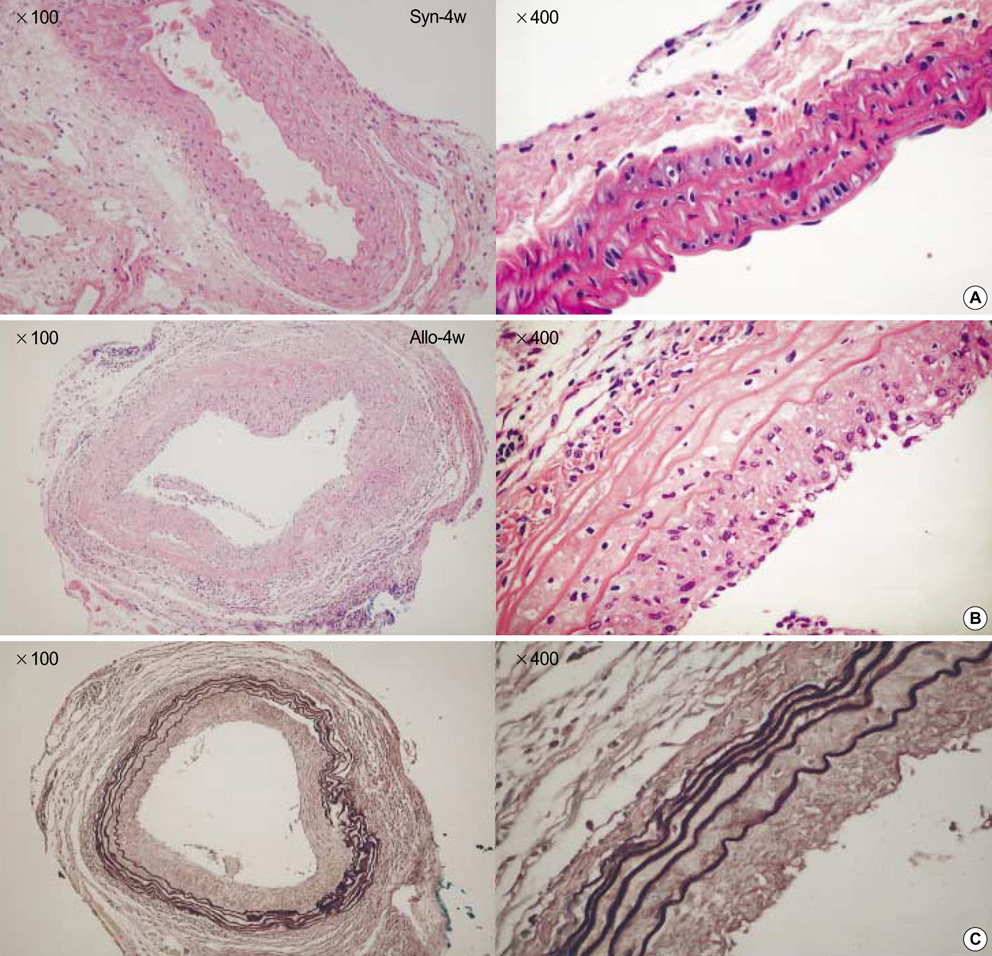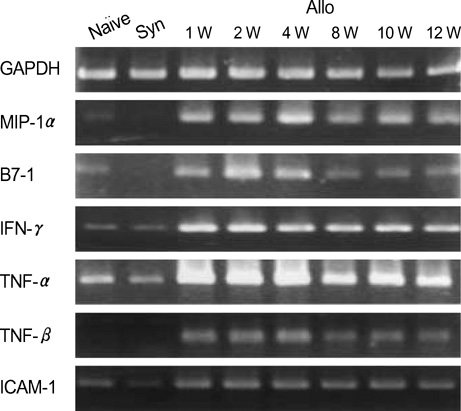J Korean Med Sci.
2007 Feb;22(1):12-15. 10.3346/jkms.2007.22.1.12.
Improved Surgical Technique for Heterotopic Aortic Transplantation in Mice
- Affiliations
-
- 1Department of Surgery, Ulsan University Hospital, School of Medicine, University of Ulsan, Ulsan, Korea. hrcho@uuh.ulsan.kr
- 2Department of Pathology, Ulsan University Hospital, School of Medicine, University of Ulsan, Ulsan, Korea.
- 3The Immunomodulation Research Center and Department of Biological Science, University of Ulsan, Ulsan, Korea.
- 4Xenotransplatation Research Center, Seoul, Korea.
- KMID: 1713222
- DOI: http://doi.org/10.3346/jkms.2007.22.1.12
Abstract
- Transplant arteriosclerosis is the main limitation for long-term survival of solid organ transplant recipients. Animal models would provide invaluable tools to investigate the cellular and molecular mechanisms underlying the pathogenesis of transplant arteriosclerosis, as well as for studies with novel drugs and other reagents for the prevention of the disease. We have therefore developed a modified technique for aortic transplantation in mice. The central suture ligation of the recipient abdominal aorta allowed a simpler end-to-side anastomosis of a segment of the donor thoracic aorta into the infrarenal portion of the recipient abdominal aorta. Using this technique, the overall survival rate was 94%. We also observed typical aspects of chronic rejection of the aortic allografts not observed with isografts. Our new technique is relatively easy to perform and has a low incidence of thrombosis, thus being useful for studying various aspects of transplant arteriosclerosis.
Keyword
MeSH Terms
Figure
Reference
-
1. Shi C, Russell ME, Bianchi C, Newell JB, Haber E. Murine model of accelerated transplant arteriosclerosis. Circ Res. 1994. 75:199–207.
Article2. Koulack J, McAlister VC, Giacomantonio CA, Bitter-Suermann H, MacDonald AS, Lee TD. Development of a mouse aortic transplant model of chronic rejection. Microsurgery. 1995. 16:110–113.
Article3. Sun H, Valdivia LA, Subbotin V, Aitouche A, Fung JJ, Starzl TE, Rao AS. Improved surgical technique for the establishment of a murine model of aortic transplantation. Microsurgery. 1998. 18:368–371.
Article4. Dambrin C, Calise D, Pieraggi MT, Thiers JC, Thomsen M. Orthotopic aortic transplantation in mice: a new model of allograft arteriosclerosis. J Heart Lung Transplant. 1999. 18:946–951.
Article5. Larsen CP, Elwood ET, Alexander DZ, Ritchie SC, Hendrix R, Tucker-Burden C, Cho HR, Aruffo A, Hollenbaugh D, Linsley PS, Winn KJ, Pearson TC. Long-term acceptance of skin and cardiac allografts after blocking CD40 and CD28 pathways. Nature. 1996. 381:434–438.
Article6. Benza RL, George JF. Aortic graft transplantation in mice. J Heart Lung Transplant. 2002. 21:1319–1321.
Article
- Full Text Links
- Actions
-
Cited
- CITED
-
- Close
- Share
- Similar articles
-
- Left at right heterotopic implantation of left liver graft in adult-to-adult living donor liver transplantation: the technical concern for decision-making
- Heterotopic Heart Transplantation in the Rat Model
- Superior Mesenteric Artery Syndrome due to an Abdominal Aortic Aneurysm in a Renal Transplant Recipient
- Time-dependent expression of ICAM-1 & VCAM-1 on coronaries of the heterotopically transplanted mouse heart
- A Technique for Bile Duct-Duodenal Anastomosis at the Consecutive Rat Liver Transplantation




